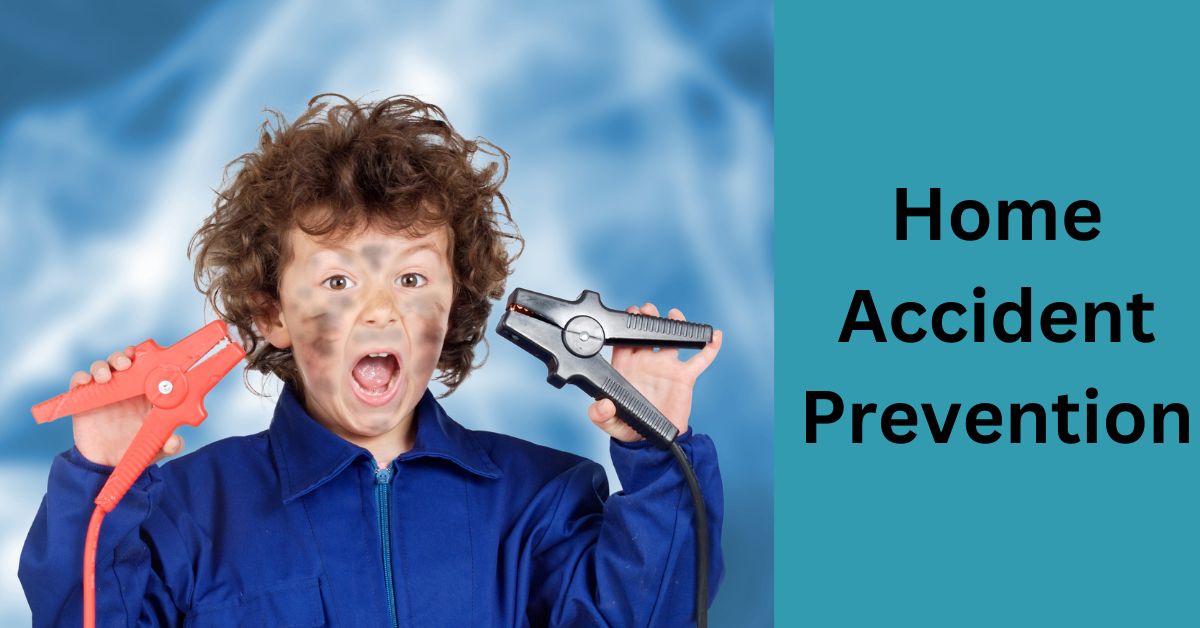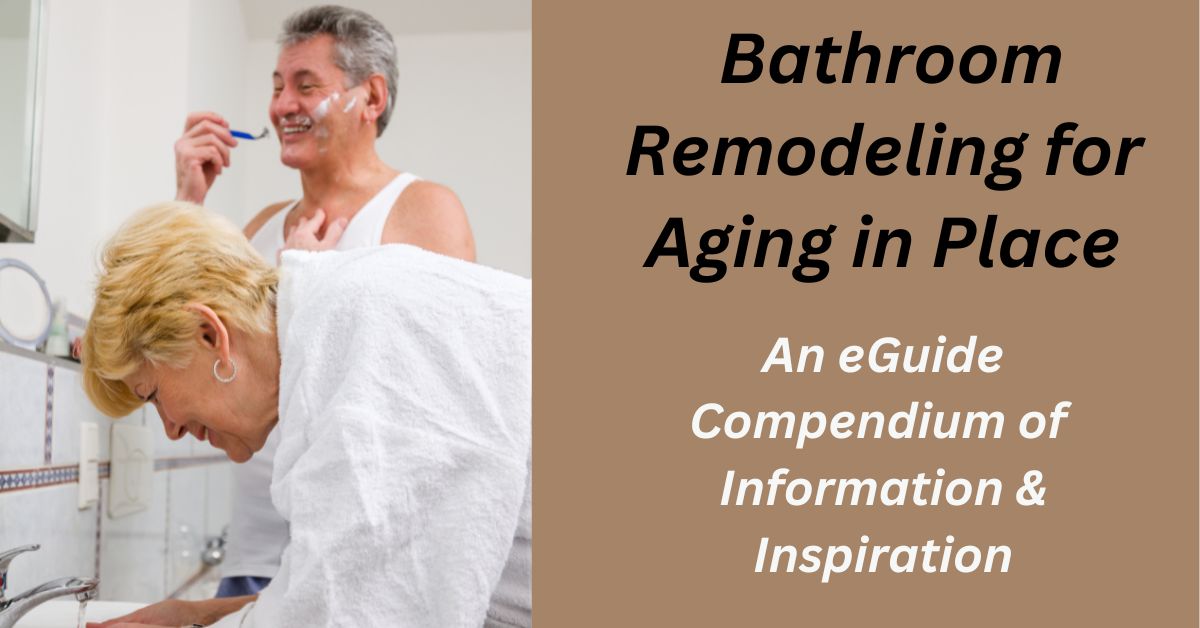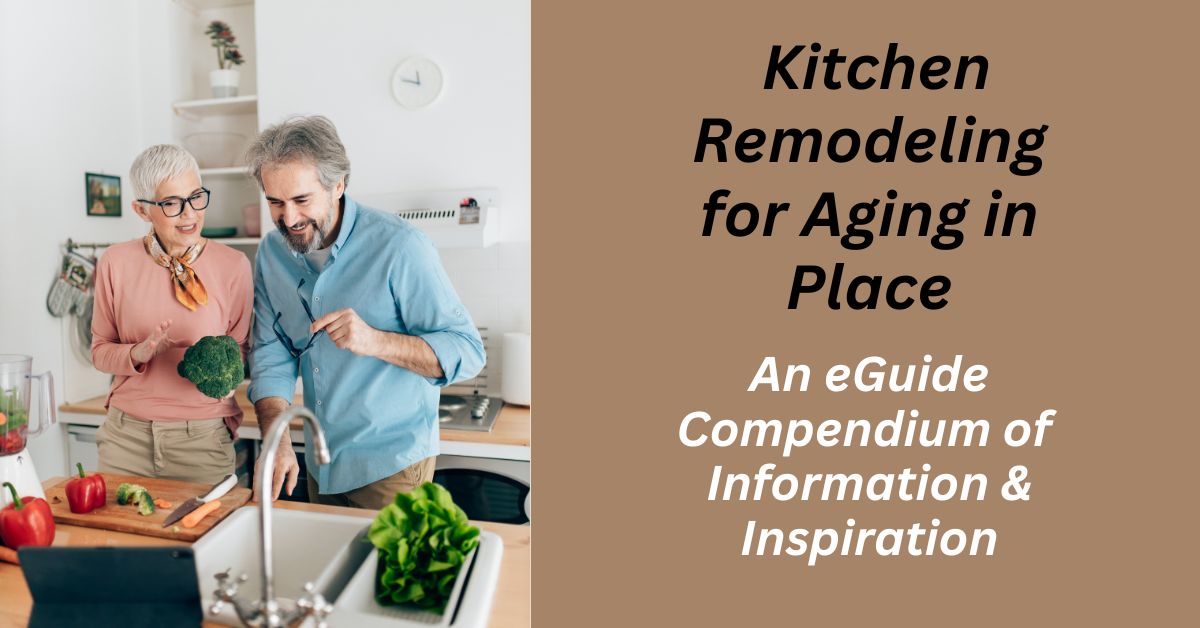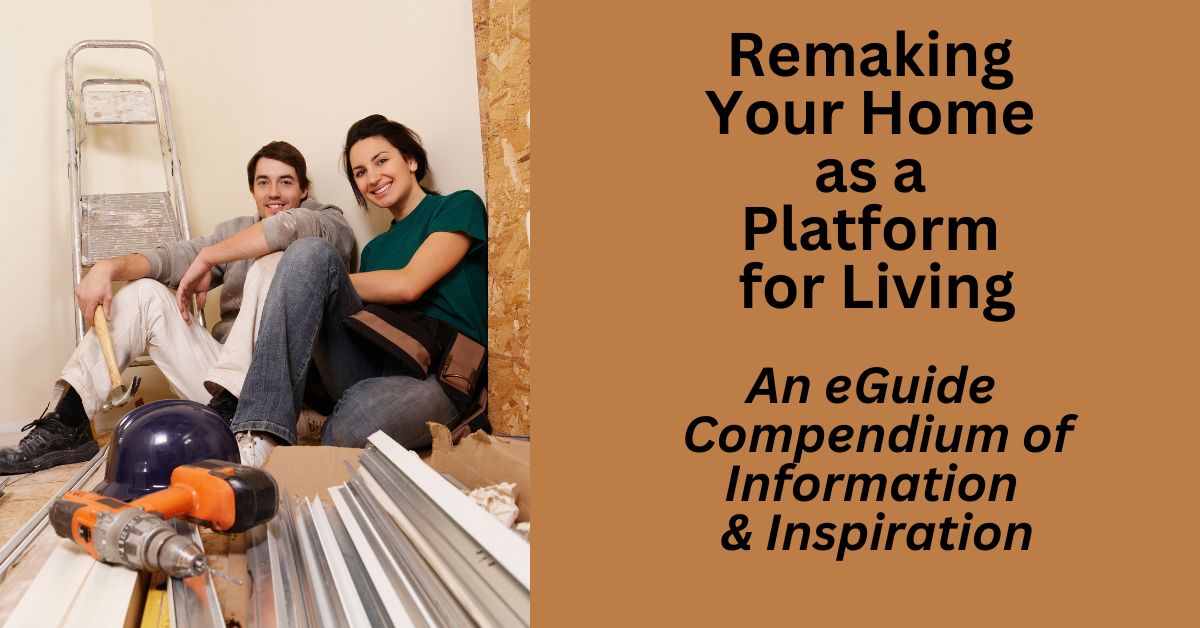Table of Contents
Note: If you came to this post about home accident prevention through a random search, please click on this parent page and our home page for more context.
Set Your Home Up for Safety
Home accident prevention starts with a home that is set up for safety. It then continues with safe home management.
One always worries about the possibility of accidents occurring in the home, especially to children and elderly loved ones. But if you build accident prevention into the home in the first place, you can worry less. In other words, accident prevention starts by prepping the home for it.
Home Accident Prevention and Remodeling
The occasion of a remodeling project is an opportunity to review how your home is set up for accident prevention and what you can build into the project to enhance it. This website covers the subject elsewhere as it specifically concerns seniors and aging in place.
Aging in place is a subset of Universal Design, which we also cover elsewhere on this website. But this also has important implications for general home safety.
- Related post: Universal Design
- Related post: Aging in Place
This post is a general overview of home safety. And we present it in checklist form.
Where possible we break it down into the whole house and room-by-room categories. This is to make it easier to identify those areas of the home and their safety aspects that we can address when executing the home remodeling project.
Otherwise, we group safe home management practices into a logical order for reference and reminders. And, at the risk of some repetition, we include a round-up of safety tips at the end.
But the main point of this exercise is to think of what we can do with the home safety infrastructure to make ongoing safe home management easier.
What we have set out here is only a starting point. And we encourage you to do your own research and conduct a risk assessment of your home.
Whole House
Staircases, Ramps, Balconies, Patios
- Sturdy handrails on each side of stairs or ramps.
- Secure loose railings
- Non-slip stair treads on wooden stairs.
- Railings for balconies & patios as appropriate
- Make sure stairs and any change in level are well-lit (consider LED lighting strips)
- If you can, eliminate stairs and changes of level altogether.
Doors
- Replace traditional door knobs with lever-style handles (these are easier to operate by people with limited hand strength or mobility).
- Plan for 36-inch wide doorways to accommodate wheelchairs and walkers.
- Design at least one entrance to the home to accommodate a wheelchair.
Windows
- Install metal window guards to prevent falls.
- Use cordless window coverings to avoid the risk of child strangulation.
Floors
- Avoid carpeting (which can increase the risk of falling)
- Choose hard floor surfaces with minimum height thresholds in doorways.
- Use slip-resistant flooring in areas that are prone to water or spills, such as the kitchen, bathroom, and entryway.
- Use non-slip mats as appropriate (comfort mats are pleasant to work on in the kitchen).
- Use double-sided tape or a non-slip rug pad to secure rugs to the floor to prevent slipping.
- Remove tripping hazards such as loose rugs or clutter, from walkways and stairs.
- Keep floors, hallways, and stairs clear of the clutter that can cause tripping or falling.
- Related post: Flooring Material
- Related post: Decluttering Tips
Lighting
- Design plenty of lighting inside the home so that there are no dark steps, hallways, or areas where it could be difficult to see.
- Automate lighting systems: Allow yourself to turn lights off after you leave via remote and illuminate the entry and front hallway when returning.
- Maximize natural lighting: Natural lighting is easiest on the eyes and it can help with fall prevention. Add or enlarge windows. Install Solar Tubes or skylights. Plus natural lighting is good for you. Accidents tend to happen when the lighting is bad.
- Design for plenty of lighting along sidewalks, driveways, and patios.
- Install floor lighting along hallways.
- Related post: Circadian Rhythm Lighting
- Related post: Interior Lighting
- Related post: Home Automation
Electrical Outlets & Cords
- Design living spaces to have plenty of outlets. Some should be on the floor near furniture to avoid running extension cords across the floor.
- Use electrical outlet covers to keep kids safe.
- Keep appliance power cords out of reach of children.
- Do not overload extension cords or run them under rugs or carpets.
- Use zip ties to bundle excessive lengths of the power cord
- Avoid overloading electrical outlets by using power strips with built-in circuit breakers.
- Do not overload or daisy chain power strips.
Secure Furniture & Appliances
- Secure tall furniture to the walls to prevent climbing kids from tipping it over.
- Secure tall furniture if you don’t have kids to worry about but are in an earthquake zone.
- Secure heavy/tall appliances to the wall for the same reasons.
- Keep furniture away from windows to prevent children from climbing and falling out.
- Make sure space-saving furniture, such as wall-mounted tables or bunk beds, is properly installed and secured.
- Use edge and corner guards as necessary to prevent injury to children and also the elderly.
- Put child locks on front-loading washers and dryers.
- Child-proof appliances by using knob safety covers. And put latches on oven and fridge doors.
- Plan for plenty of storage so that there is a place for everything and no need for stacks of papers, books, or clutter around high-traffic areas or steps.
Regular Maintenance
- Regular home maintenance has safety implications.
- Make sure your furnace/HVAC system is checked regularly to prevent the risk of carbon monoxide poisoning.
- Check for mold and mildew, especially in bathrooms and basements.
- Related post: Healthy Home
- Related post: Air Quality at Home
- Related post: Indoor Air Quality & VOCs
- Related post: Home Maintenance
The Bathroom
The bathroom is used by people of all ages and abilities. So it needs to be safe for people with limited mobility. Besides, even the able-bodied can have accidents. Universal Design recognizes this and tries to head it off.
Multiple Shower Heads
These add flexibility to bathing. A central rain showerhead, a handheld shower head combined with a shower seat lets people with all levels of mobility bathe safely.
- Related post: Shower Heads
Curbless Shower
Make the entrance to the shower obstruction free to make access easy and prevent accidents. Leave plenty of room at the entrance for a person in a wheelchair. Ideally, the shower threshold should be the roll-in type.
- Related post: Bathroom Shower
Recessed Storage Nooks in the Shower
Easy-to-reach soap and shampoo keep people safer.
Safety Grab Bars
Include them at the toilet and in showers and tubs to provide support and prevent falls.
- Related post: Bathroom Safety Grab Bars
Easy Access to Towels and Robes
Make sure towel bars and robe hooks are handy to the shower. Minimizing the need to stretch and reach in a potentially slippery environment, keeps people safer.
Easy Faucet Operation
Use a lever or touchless faucet in the bathroom. The same applies to the kitchen.
Slip-Resistance
Choose non-skid surfaces for showers and tubs. Or place non-slip mats in the bathtub or shower to prevent slips and falls. Make sure they are properly secured or they can become a problem all their own.
Comfort Height Toilet
These are easier (and therefore safer) for everyone to use. Combine it with a bidet. And if children are a factor, add a toilet seat lock to prevent curious toddlers from falling in.
Kitchen
Kitchen Work Areas
We cover this topic elsewhere with the kitchen work triangle. The point is that this concept is not only efficient, but it is also safe. It minimizes the distance over which anything heavy must be carried.
- Related post: Kitchen Layout
Safe Cooking
- Use an induction cooktop rather than a gas or radiant electric unit. It is much safer around both children and seniors.
- Keep knives sharp to prevent them from slipping or being forced.
- Follow safe practices when cooking, such as using a timer to prevent overcooking or burning food, and never leaving cooking food unattended.
- Be careful working with hot surfaces, such as the stove or oven, and use pot holders or oven mitts to handle hot items.
- Related post: Kitchens for the Elderly
No Over-the-Range Microwaves
Do not Install a microwave oven over the range. It is not safe. Reaching up and into a microwave when there is a hot cooktop below is a bad idea for anyone and especially the elderly.
- Related post: Over-the-Range Microwave Ovens
Kitchen Clearances
Leave at least 42 to 48 inches in kitchen aisles for wheelchairs to navigate (the same applies in hallways).
Accessible Storage
Unless storage is accessible, attempting to use it can be dangerous. This is especially so for the elderly. But even younger and fitter adults can suffer sprains and lose their balance when struggling to find things in the cabinetry.
- Store the most used kitchen items between knee and shoulder level. For storage below knee level, a drawer or pull-out shelf is best. This eliminates bending, stooping, and reaching for things in the back of the bottom of the cabinet.
- Make sure there are cabinets within reach that do not require a step stool for access.
- If you have the space, lower some of your upper cabinets to the countertop level. This makes them much easier to access for people in wheelchairs, even at the cost of valuable counter space.
- Install child-proof latches and locks on cabinets. And store household products that are hazardous to children high up in the cabinetry.
Fire Safety
- Be sure to have working smoke alarms in the house. Test them regularly.
- Reduce flammable clutter, such as old boxes or paper.
- Keep flammable materials away from heat sources such as heaters and fireplaces.
- Make sure you have at least two operational fire extinguishers. One should be in the kitchen. Keep a fire blanket on hand. Make sure the household knows how to use them.
- Have a fire escape plan and ensure the household is drilled in it.
- Be careful using space heaters.
The Outside
- Be careful using outdoor equipment like lawnmowers, hedge trimmers, and chainsaws. Wear protective gear. Keep children away from these things.
- Maintain the hardscape. Repair cracks and uneven surfaces in driveways and walkways.
- Keep sidewalks and driveways free of snow and ice to prevent slips and falls.
- Put a fence around pools and spas.
Water Safety
- Be careful with hot water: Put an anti-scald device on the hot water heater to prevent scalding from faucets and showers. Always test the water temperature before bathing or showering.
- Practice water safety in and around pools and hot tubs, and ensure that children are supervised at all times.
Security
- Maintain clear views from your home. It deters intruders if they can’t hide.
- Install motion-sensor lights outside your home to deter intruders and help visibility.
- Install a home security system with cameras and alarms to deter intruders and alert you to a break-in.
- Install window stops on windows that are accessible from the outside to prevent intruders.
Other Safety Essentials & Practice
- Ensure carbon monoxide and smoke detectors are operational and installed where the code requires.
- Make sure you have a complete and comprehensive first aid kit. Learn CPR.
- Make sure all medications are safely secured away from children and pets.
- Make sure all household and garden chemicals (cleaners, fertilizers, and pesticides) are safely secured away from children and pets.
- Be careful with candles and gas appliances.
- Make sure firearms and ammunition are secured in appropriate safes.
- Post a list of emergency phone numbers. Make sure the family knows where they are and program them into your phone. Make sure children know how to dial 911.
- Keep pets under control and away from where they might cause accidents.
- Use proper lifting techniques when lifting anything heavy. Bend at the knees and use your legs instead of your back.
- Use a ladder safely. Put it on a level surface and make sure it is fully open.
- Use safety gates to keep children away from unsafe areas.
- Keep plastic bags away from children. They are suffocating hazards.
- Check that your indoor plants are not harmful to children.
- Keep pet food and water away from children.
- Use baby-proofing kits.
- Use a baby monitor to keep an eye and ear on your children while you are in another room.
- Use an elder monitor to care for an elderly family member.
- Be careful using power tools. Always wear protective gear, especially safety glasses.
- Keep a clear workspace when using tools or equipment. Ensure that the area is well-lit.
- Be careful using exercise equipment and follow the manufacturer’s instructions for safe use.










Leave a Reply